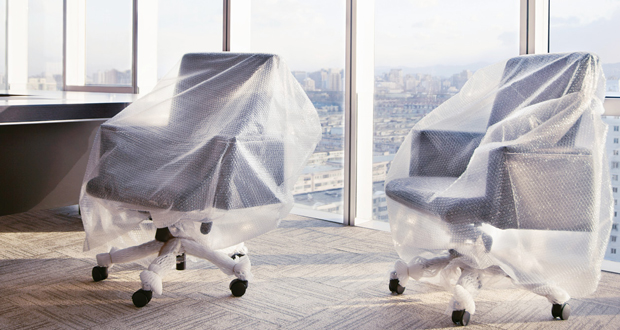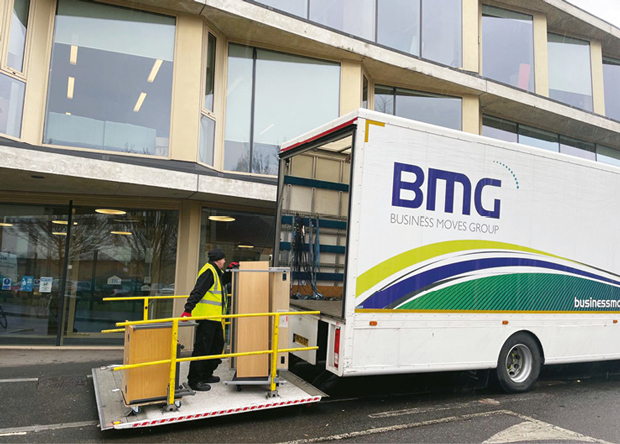 Rachel Houghton, Managing Director Business Moves Group explains why asset management is a key part of a business relocation project and it can enable the better use of resources and create the best outcomes for businesses
Rachel Houghton, Managing Director Business Moves Group explains why asset management is a key part of a business relocation project and it can enable the better use of resources and create the best outcomes for businesses
As the workplace continues to adapt to office occupancy trends, keeping track of all your assets and maintaining up-to-date information on their condition and value is crucial for businesses to ensure they are keeping to their ESG goals and budgets. But how does asset management work?
For us, the first part of any workplace project, be it a relocation or change management, begins with understanding the client’s design standards and furniture strategy. This is followed by the creation of a full asset audit of everything that the business owns, including furniture and IT and AV equipment, all the way to filing and stationary stock. A regular occurrence when we present the full asset audit to the client is that they don’t realise just how much ‘stuff’ they have, or how to use it efficiently.
Once we have the full list of the clients’ assets and their plans for their space, we grade each individual asset. Items are graded based on their current condition and their potential usability in the future. By using a grading system, we can make better informed decisions about the future of all the assets owned by the client. We can enable them to determine if certain assets will be kept, what items will be best used elsewhere, and what items are no longer needed.
This process allows us to build a program for the reuse of stock in a project and begin plans for what will and won’t be included as per the client’s new design and furniture strategy. Typically, we see that significant investment has been made for client-facing assets, whereas the ‘back-office’ items remain outdated and uninspiring. This process may present an opportunity to invest in employee’s equipment and spaces to improve the overall workplace experience.
STOCK PROGRAM
By building a stock program following the asset grading, we can ensure that the assets are being retained for the right reasons, and those that aren’t are being reused and repurposed efficiently. Assets that no longer have a use or don’t align with the design strategy still have plenty of options for reuse.
BMG has several charity partners that take unwanted furniture, such as Business2Schools(i), which supports the redistributing of office furniture for use in schools across the country. Providing a second life through closed-loop solutions such as these are an effective way for organisations to make carbon savings, prevent additional waste management costs and create a positive contribution to wider society.
For those assets that are beyond use, and won’t find a new home, recycling is the final step. Recovering as much of the material as possible means they can be converted, supporting the manufacture of other products and the production of energy. After the material breakdown, clients are provided with detailed reports, so they know exactly what happened to each item, the carbon costs that come with recycling and the environmental benefits that come from avoiding landfill.
ASSET MANAGEMENT SOFTWARE
At BMG, we use a bespoke software platform that manages the asset inventory of businesses and can be integrated with employee surveys. When we create audits of each employee’s desk set up for the new location, this information can be uploaded to the software and linked to the relevant individual assets, along with their location at the new space. This helps us to streamline the process and deliver the best level of service to our customers.
Assets can be monitored according to occupancy data and working trends, informing the facilities management teams which items are used the most, and therefore need more routine cleaning or general safety checks. Additionally, it can inform what assets aren’t being used by occupants and help with decision making around the future of that asset within the business.
Using an online platform is the most effective method to organise these assets and their data and drives benefits in time saving, accessibility and sustainability. It allows for the most accurate reporting on the cost savings made by reusing and refurbishing furniture assets as well as the carbon savings from not sending them to landfill. This information helps businesses to demonstrate how they have supported the communities they operate in.
This software also aids in monitoring the value and depreciation of the assets within a business. Typically, when items go into storage and are added to the balance sheet, that current value isn’t monitored over time. With this software, an asset’s value can be closely monitored and kept up to date, allowing for more accurate financial reporting for the business.
Additionally, the software can be adapted to suit the individual needs of the business. Permissions to view the asset inventory can be given to whoever requires the data. The authority to request certain items from the inventory can also be granted to users, almost the same as an online shop.
SERVICE OFFERING
Although asset management has been a part of our service offering for over 20 years it has become more popular in recent years as workplace change has rapidly evolved. Requirements of businesses are changing and will continue to change; as ESG strategies and carbon emissions targets grow, sustainable furniture asset management will become a large part of a workplaces change management program.
A commitment to contributing to the circular economy with a climate risk agenda are what make asset management a succinct way to keep track of your businesses position, and what can be done to improve or maintain it.
Additionally, the physical landscape of the workplace is also in a transitionary period. Task-led environments are becoming more popular, with increasing separation between collaborative spaces and quiet workspace. Businesses want to know how they can accommodate for these new trends in their space with the furniture assets they have, and asset management helps them do that.
CASE STUDY: AVIVA
BMG has worked in partnership with Aviva for over seven years and asset management is a core part of our remit. One recent relocation and change management project included a full audit of Aviva’s office furniture assets, item grading, and making decisions about what items to reuse, refurbish, donate, and recycle. Key takeaways from the project included:
- £238,950 in cost avoidance through the selective reuse and redistribution of quality Aviva furniture assets.
- 88,960 kg of CO2 avoidance through reuse avoiding new purchases (saving CO2 that would have been generated through manufacturing).
- A total of 536 standard work desks, 508 ergonomic task chairs, and 146 storage cabinets saved.
- 44,322 kg of material that was segregated and repurposed, therefore avoiding landfill.
The project saw the reutilisation of desks to provide a framework which was then topped with a new bespoke worksurface, to create a collaborative work setting for teams; the creation of a standardised height raise desk to help support all colleagues, allowing them the choice of how their desk is positioned; and an alternative numbering system in line with their smart working principles which meant that the process of employees locating a desk was simplified.
The project would not have been possible to report on without the assistance of asset management protocols and software that keep track of each asset.






